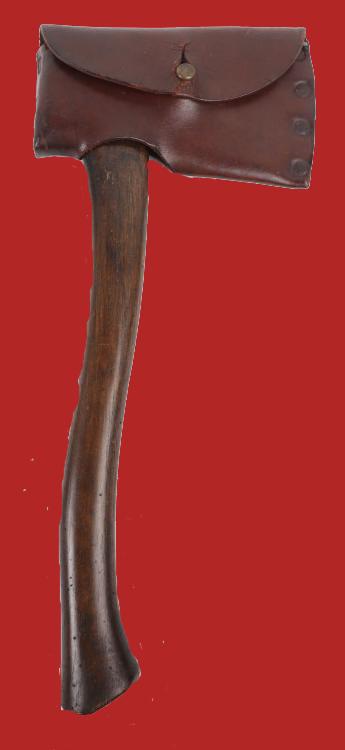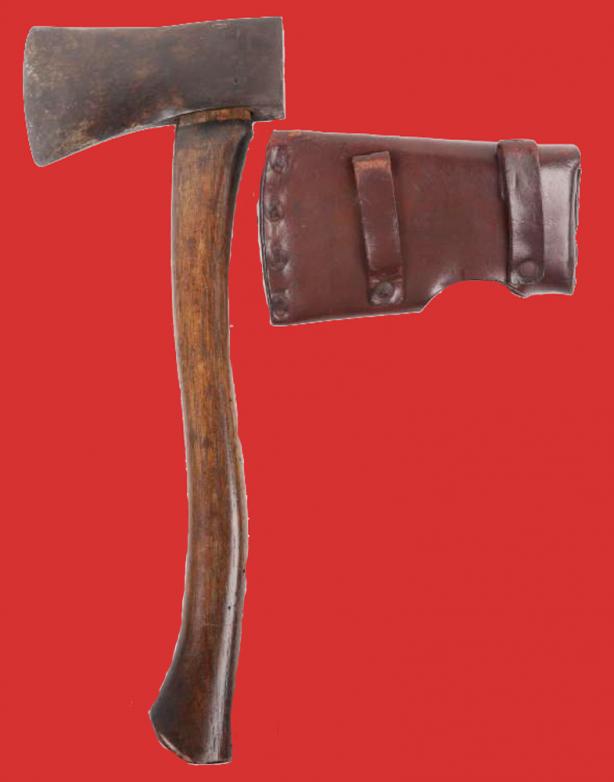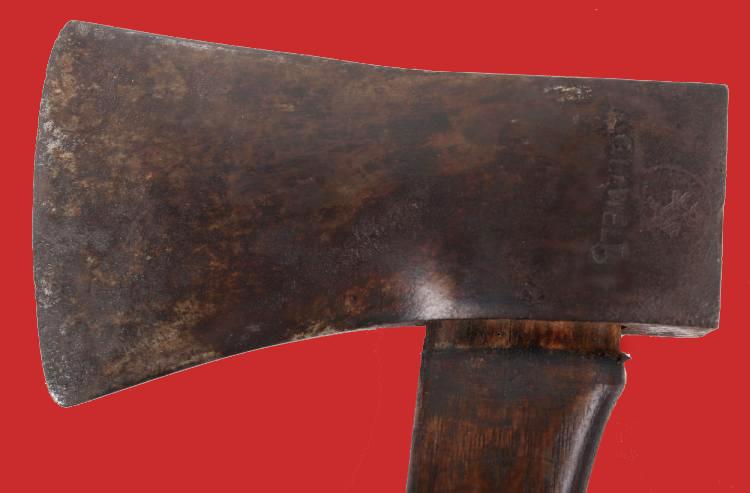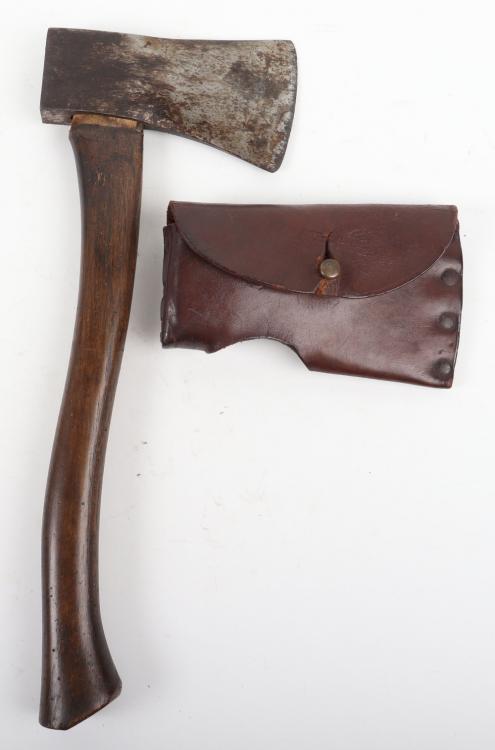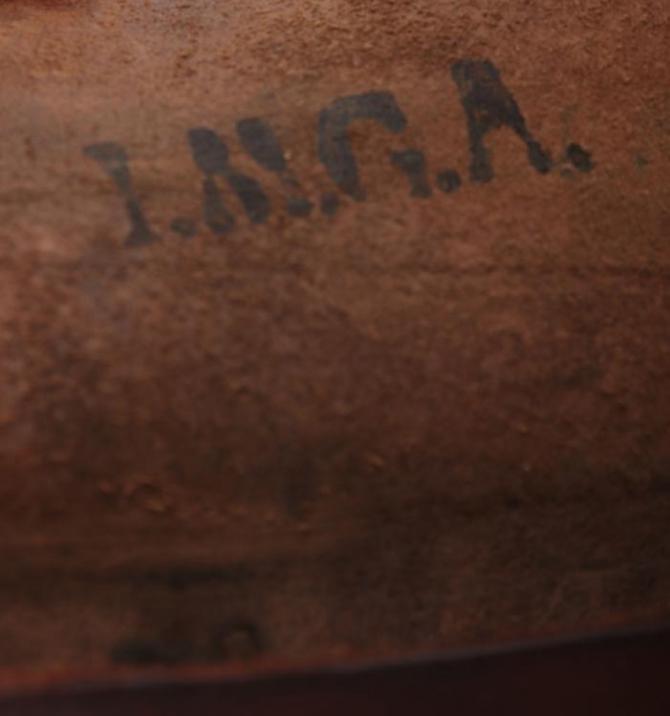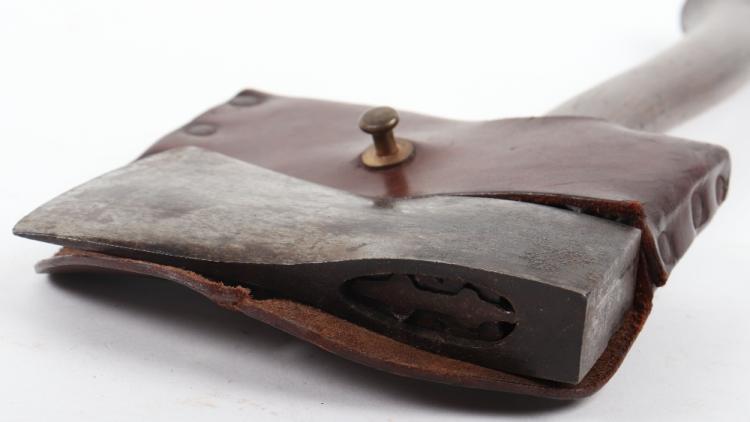Part of a Superb WW1 Machine Gunner's Collection, British and German. An Incredibly Rare WW1 German Machine Gunners Abteilung Marked Utility and Combat Axe and Cradle Leather Belt Holster Regimentally Marked
steel axe head stamped with standing lion makers mark and “G. LEWELT”, waved wooden haft. Housed in brown leather cradle with stud fittings, stamped to the inside “1 M.G.A” 1st Maschinengewehr Abteilung and the axe block with “BA II 1917” Issued to Bekleidungsamt Armee Korps Stettin. Split to leather by brass stud. Used by the machinegunner to cut down trees or wood that thus enabled a machine gun to be placed at its best advantage point, preferably concealed by wood or thicket. It was also the perfect trench warfare close combat weapon. The German army had been a late convert to the potential of machine guns, but its tactical employment of them in 1914 proved superior to that of its enemies. German machine gunners exploited the weapon’s long-range accuracy, and the fact that the guns were a regimental (rather than battalion) asset allowed them to be grouped to achieve maximum effect. This efficiency created a myth that Germany deployed far more machine guns than its opponents in 1914.
Following the onset of positional warfare, machine guns gained notoriety as highly effective direct-fire weapons. They could theoretically fire over 500 rounds per minute (rpm), but this was not normal in combat, where "rapid fire" generally consisted of repeated bursts amounting to 250 rpm. The effectiveness of these bursts of between ten and fifty bullets was enhanced by exploitation of ballistics and the precision offered by firing from adjustable mounts. At ranges of 600 metres or less, machine guns could create fixed lines of fire which would never rise higher than a man's head, with deadly results for those attempting to advance across them. Or the gun could be traversed between bursts to offer what the French called feu fauchant (mowing fire). At longer range, their bullets fell in an elliptical "beaten-zone", giving them an area-fire capability.
Groups of guns could interlock their fire. In favourable circumstances, such as at Loos on 26 September 1915, or on the Somme on 1 July 1916, this could prove devastating. But although this is how machine guns are now best remembered, new methods of using them were developed from 1915 onwards.
Every item is accompanied with our unique, Certificate of Authenticity. Of course any certificate of authenticity, given by even the best specialist dealers, in any field, all around the world, is simply a piece of paper,…however, ours is backed up with the fact we are the largest dealers of our kind in the world, with over 100 years and four generation’s of professional trading experience behind us
Code: 23343
775.00 GBP

